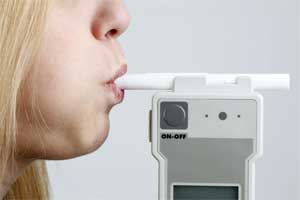- Home
- Editorial
- News
- Practice Guidelines
- Anesthesiology Guidelines
- Cancer Guidelines
- Cardiac Sciences Guidelines
- Critical Care Guidelines
- Dentistry Guidelines
- Dermatology Guidelines
- Diabetes and Endo Guidelines
- Diagnostics Guidelines
- ENT Guidelines
- Featured Practice Guidelines
- Gastroenterology Guidelines
- Geriatrics Guidelines
- Medicine Guidelines
- Nephrology Guidelines
- Neurosciences Guidelines
- Obs and Gynae Guidelines
- Ophthalmology Guidelines
- Orthopaedics Guidelines
- Paediatrics Guidelines
- Psychiatry Guidelines
- Pulmonology Guidelines
- Radiology Guidelines
- Surgery Guidelines
- Urology Guidelines
Novel Breath Tests can diagnose Cancer: JAMA Oncology

A new meta-analysis of the early trials of volatile organic compound (VOC)–based exhaled breath tests for cancer detection has revealed that they have a relatively high level of specificity and sensitivity despite still being in the experimental stages of development. The study was published in the journal JAMA Oncology.
George B. Hanna, a surgeon at the Imperial College London in the United Kingdom, and colleagues conducted the study to determine the diagnostic accuracy of VOC breath tests for the detection of cancer and to review sources of methodologic variability.
"The detection and quantification of VOCs within exhaled breath have evolved gradually for the diagnosis of cancer. The overall diagnostic accuracy of proposed tests remains unknown," write the authors.
A breath test detects and quantifies preidentified, named VOCs within exhaled breath in order to diagnose cancer.
Also Read: Breath test could help detect stomach and esophageal cancers
The approach is still relatively immature and under development by multiple teams in oncology. "There are currently no breath tests used in oncology of cancer screening," Hanna told Medscape Medical News.
However, the concept is already in use in other areas of clinical practice, including breathalyzer devices for ethanol detection, carbon 13 urea breath testing for Helicobacter pylori, and exhaled nitric oxide testing in asthma.
In the new analysis, Hanna and colleagues identified 63 studies, all of which were phase 1 biomarker trials.
Key Findings:
- The studies showed that for cancer diagnosis, the mean (SE) area under the ROC curve for breath VOC analysis was 0.94 (0.01).
- A pooled sensitivity of 79% (95% confidence interval [CI], 77% - 81%), and a pooled specificity of 89% (95% CI, 88% - 90%) was reported by the researchers.
- The pooled results compare favorably to existing screening tests for cervical cancer (Pap test: sensitivity, 73%; specificity, 90%), prostate cancer (prostate-specific antigen test: sensitivity, 21%; specificity, 91%) and breast cancer (mammography: sensitivity, 68%; specificity, 75%).
- Factors that may influence variability in test results included breath collection method, patient physiologic condition, test environment, and method of analysis.
Notably, the meta-analysis included only studies that identified named VOCs altered within the exhaled breath of patients with cancer. Studies were excluded if they involved sensors and pattern recognition techniques that did not report on specific VOCs.
The new study is "a nice compilation of all the [breath test] trials that have been done over the last decade," said Victor van Berkel, a thoracic surgeon at the University of Louisville in Kentucky and a breath test researcher.
However, van Berkel was uncertain about the value of the new findings.
"My concern with this review is that it takes a bunch of very different tests, looking at different volatile compounds in different cancers via different mechanisms, and lumps all the results together for an overall sensitivity and specificity. I am not sure what to conclude from those results."
"I think it is true that a lot of work still needs to be done with regards to breath tests for cancer," he said. He emphasized the need for standardization and quality control in larger validation trials.
Hanna described some of the hallmarks of his group's work so far. "Crucially, biomarkers were different between different tumor sites, allowing for a single breath test for use as a risk-assessment tool to determine independent referral pathways for suspected esophagogastric, colorectal, or pancreatic cancers," he said.
First, an exhaled breath test could act as a triage investigation to direct patients who present with nonspecific common symptoms that could indicate cancer to have invasive or more specialized investigations, they write.
Second, breath tests may have a role in screening programs (provided they are accurate enough). The noninvasive nature of the test and its acceptability by patients and practitioners would increase the uptake of screening, they add.
Third, breath tests may have a role in monitoring the response to cancer therapy and in detecting disease recurrence, the meta-analysis coauthors believe.
"The findings of our review suggest that standardization of breath collection methods and masked validation of breath test accuracy for cancer diagnosis is needed among the intended population in multicenter clinical trials. We propose a framework to guide the conduct of future breath tests in cancer studies," concluded the authors.
For further information log on to 10.1001/jamaoncol.2018.2815

Disclaimer: This site is primarily intended for healthcare professionals. Any content/information on this website does not replace the advice of medical and/or health professionals and should not be construed as medical/diagnostic advice/endorsement or prescription. Use of this site is subject to our terms of use, privacy policy, advertisement policy. © 2020 Minerva Medical Treatment Pvt Ltd